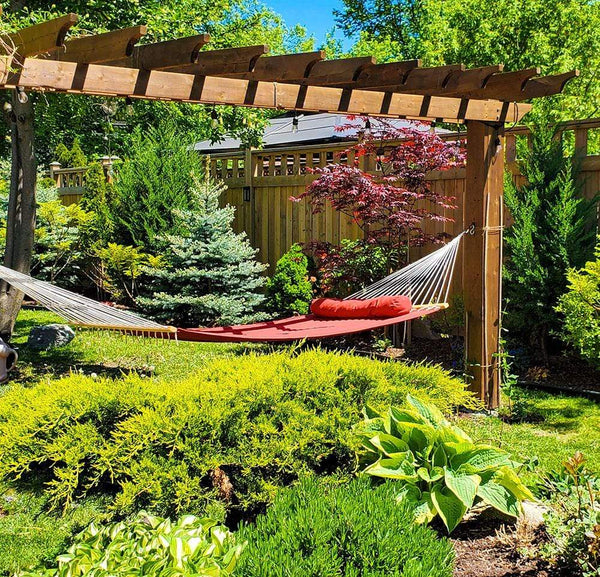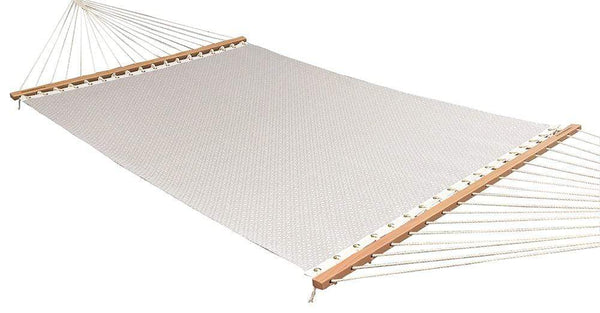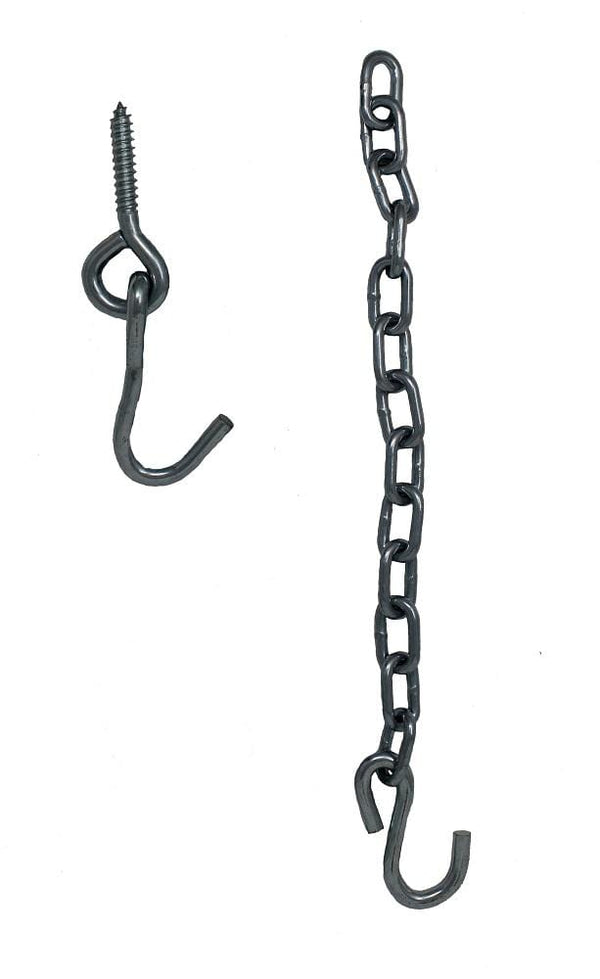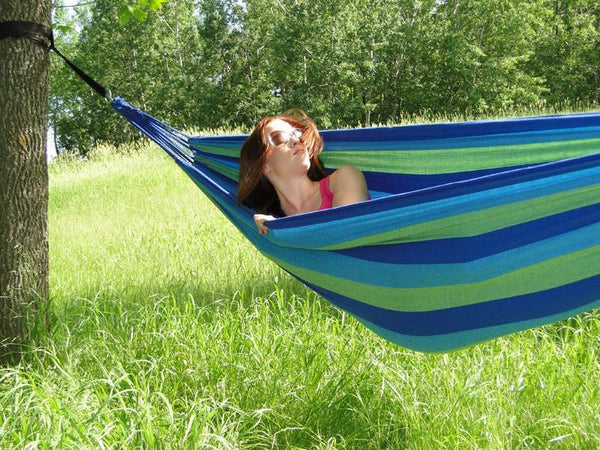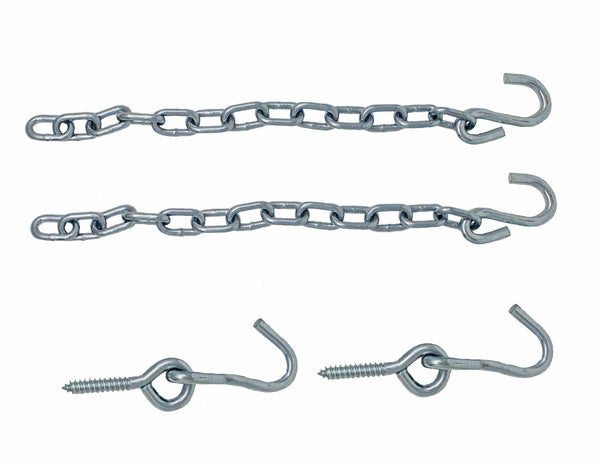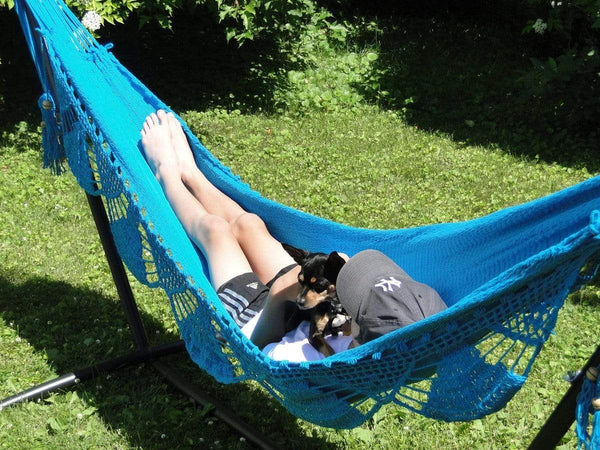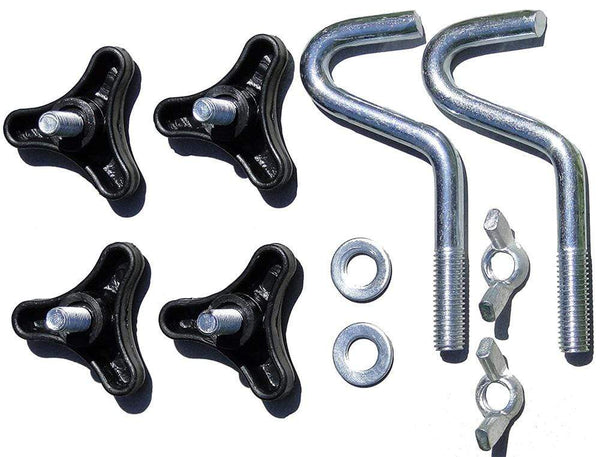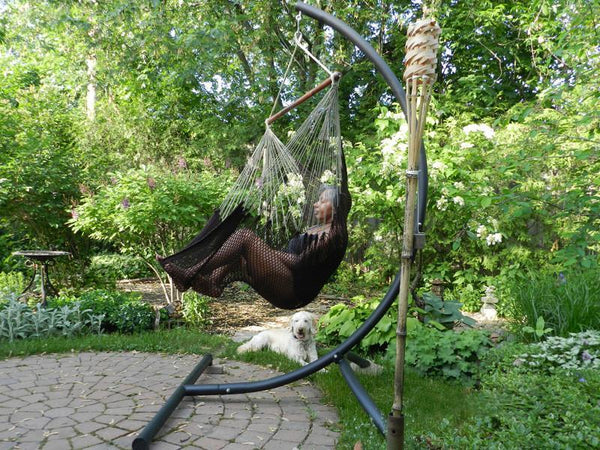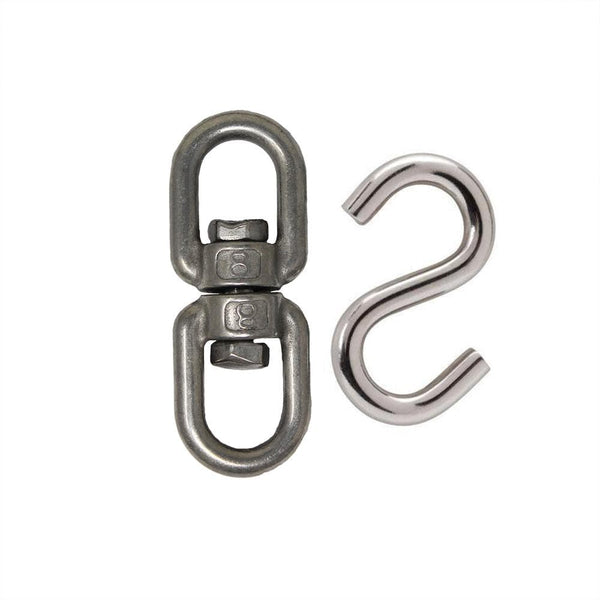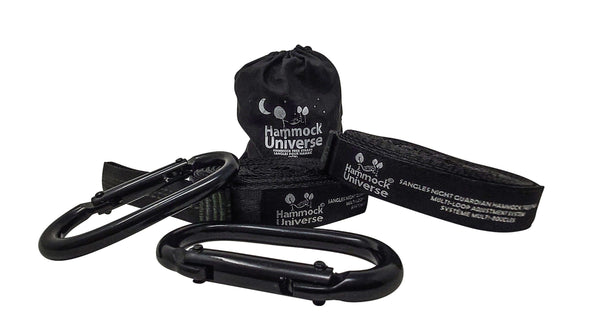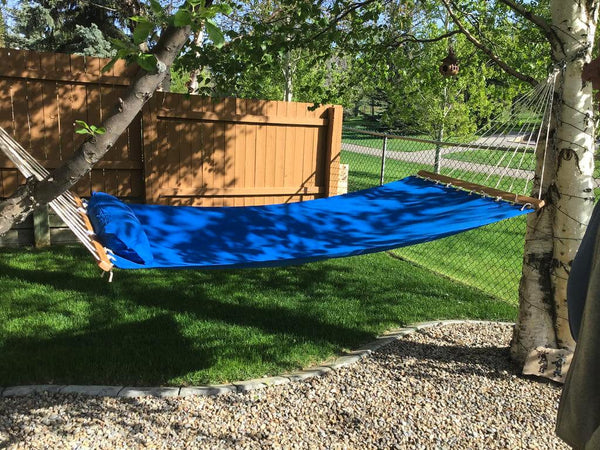FREE SHIPPING on most orders $25+ HAMMOCK BUYING GUIDE
Menu
-
-
Hammocks
-
Hammock Stands
-
Hammocks with Stands
-
Hanging Hammock Chairs
- View all Hammock Chairs
- Brazilian Style Hammock Chairs
- Colombian Hammock Chairs
- Mayan Hammock Chairs
- Mayan Hammock Chairs Deluxe
- Universal Hammock Chair Stand
- U Hammock Chair Stand
- Brazilian Hammock Chair with Universal Chair Stand
- Colombian Hammock Chair with Universal Chair Stand
- Mayan Hammock Chair with Universal Chair Stand
- Mayan Hammock Chair Deluxe with Universal Stand
-
Accessories
- Gift Cards
- Tools and Guides
- Bargain Bin
-
- 1-800-207-4761
- Login

FREE SHIPPING on most orders $25+ HAMMOCK BUYING GUIDE
Take Care of Your Hammock and It’ll Take Care of You
September 23, 2021 9 min read

The Best Hammock Care, Storage, and Repair Tips to Keep Things Hanging For Years
If you're a long-time hammock owner, by now, you’ve probably already gotten some good hang time in your hammock. And, in all likelihood, you’ve noticed your hammock needs a bit of TLC to keep looking and feeling great. After all, you most likely want more summers of relaxation in it.
As durable as the materials are, they still need that little bit of love and care every now and then.
This begs the question: how, exactly, do you care for a hammock and why is proper maintenance so important?
Don’t worry – we’ve got the answers.
The Risks of Not Taking Proper Care of Your Hammock
At Hammock Universe, all of our hammocks are made from premium materials and are designed to last in ideal conditions. But with time, excess use, and adverse weather conditions, all hammock fabrics will inevitably start fraying and will eventually break down without proper care. Chain links and hooks can also break after a certain period of time when excess weight is frequently applied.
The last thing you want is for a relaxing nap to be interrupted by chains snapping and your hammock tearing in half, making regular care and maintenance very important.
General Hammock Maintenance Tips
From safe hanging outside to proper cleaning and storage, here are the top hammock care tips to keep your hammock safe, secure, and clean for many summers to come.
Always Inspect for Damage
To avoid a sudden drop and a rough landing, always inspect your hammock for damage before hanging it. Keep an eye out for broken, worn, or otherwise damaged materials.
String, rope, and fabric are all prone to fraying over time. Chains, meanwhile, can stretch and eventually break when too much weight is applied.
If you store your hammock outside over the summer months, watch out for unwanted visitors. Nothing’s worse than enjoying a good hang only to find out a few spiders have had the same idea, after all.
Mildew is a more serious risk and can be harder to spot. Watch for a film or algae on your hammock, as well as discolouration and fabric staining. These are easily addressed, but mildew can cause respiration problems if inhaled, and frustrating rashes on your skin after contact.
Thankfully, hammocks are easy to clean, and many repairs are easily done on your own over the course of an hour or so. Regular cleaning and proper storage can help prevent mildew growth and other forms of damage and help keep your hammock out of the elements.
How To Clean, Fold, And Store Hammocks
Hammocks need regular cleaning, especially if used regularly and left outside. If you keep your hammock clean, you can maintain its appearance, prevent dirt buildup, bug infestations, and mildew growth.
Whether you’re storing your hammock for a few nights or a full season, make sure to clean it up first using these handy tips:
Shake Dirt Off
This is the first step in your hammock cleaning efforts, intended to get rid of any particulate build-up that’s settled on the materials. What’s the best way to get it done? To quote Taylor Swift, shake it off.
Leave one end of your hammock suspended and shake the other vigorously.
You won’t get everything in one go, but this helps remove a ton of the obvious dirt, plus any pollen, dust, or tree leaves that might be hiding in the folds.
Washing Hammocks
Depending on the material your hammock uses, you might have to adapt your washing techniques. When in doubt, however, always follow the hammock manufacturer’s instructions for proper cleaning.
If your hammock has removable spreader bars, remove these before cleaning.
For hammocks with non-removable spreader bars:
- Lay the hammock flat on a clean surface.
- Spray it down with a hose.
- Scrub the surface with a soft-bristled brush and a mild detergent or soap.
- Spray stains with a remover to help treat stubborn spots.
- Rinse the hammock off thoroughly with your hose.
- Hang your hammock to dry outside, either hanging from a stand or a tree if possible.
Some hammocks are machine washable, so you can wash these on a gentle cycle in cold water and hang them out to dry just like your laundry.
To hand wash your hammock, fill up a bucket, tub, or kid’s pool with two gallons of warm water and two ounces of mild detergent. If you’re washing a Mayan, Nicaraguan, or Brazilian hammock by hand, tie each end off with rope to prevent strings from tangling. Gently scrub the fabric together with your hands and swish things around. Drain the bucket and refill it with clean water, and rinse thoroughly to remove any remaining soap. When the water runs clear, your hammock is clean.
To dry it out, gently squeeze out as much water as you can and hang it up outside. Place stick or broom crosswise in the hammock if it doesn’t have a spreader bar; this’ll help it dry faster.
Folding Hammocks
If you’ve just washed your hammock, make sure it’s completely dry before you try folding it. Just like damp laundry, folding a damp hammock puts it at risk of mold and mildew growth.
As with washing, the type of hammock you own determines your folding technique:
- For non-spreader-bar hammocks, fold the hammock once end-to-end, and hang the loops on a hook in a closet or tuck in the cords and roll up your hammock.
- Brazilian hammocks should simply be folded so that they fit securely in their pouch.
- Lay spreader-bar hammocks on a clean surface, fold the ring and ropes into the hammock bed on one end, and roll the hammock toward the other end using the spreader bar.
How to Properly Store Your Hammock
Each type of hammock has it's own care, maintenance, and storage instructions. The general rule of thumb here is to store your hammock in a dry place to avoid mildew and damage. The best place to store a hammock is in a breathable bag indoors and away from direct sunlight and dampness. A dry, cool basement is perfect, just so long as the hammock avoids moisture.
If you must store your hammock in the garage or shed, make sure it’s stored in a weather-tight tote that is high up to avoid pests, specifically rodents. Rats, mice, squirrels, you name it – they love hammocks almost as much as we do, though for completely different reasons. Rodents will bite, chew, gnaw, scratch, and ultimately destroy your hammock, especially if left outside or hung up near a forest.
Hammocks should not be stored outside, but if you do plan to leave yours outdoors, make sure it’s in a weather-tight tote and away from direct sunlight.
General Hammock Safety
When things go wrong with a hammock, you’re at risk of a sudden and rapid change in altitude, followed by a rough impact. That’s why it’s so important to ensure your hammock is in good working order, and that it won’t slip, fall, or break.
Weight Limits and Sizing
To start with, always check weight limits and sizes on any hammock you hang. If you’re a 200-pound guy sitting in a hammock meant for kids, for example, you’re going to have a bad time.
It’s important that your hammock supports your weight adequately, and that it’s long and wide enough so you won’t be falling out of it.
How to Safely Hang A Hammock
We’ve discussed this before, but to summarize, whatever points you secure your hammock to should be an appropriate distance apart and sturdy enough to hold your weight.
Ideally, your suspension should be on a 30-degree angle. This provides enough slack so your weight won’t put too much force on the hammock, suspension equipment, and anchor points when you sit.
Too much force can lead to major damage and you falling to the ground.
Hammocks without spreader bars should not be taut when suspended, but should curve gently, just like a banana or a smile.
Finally, depending on your height, the average hammock should hang about 18 inches from the ground.
How to Repair A Hammock
Even if you’re careful, your hammock might still get a bit of damage at some point. Thankfully, repairs are very easy to do yourself, and you can even help prevent future damage once you know what you’re doing.
Patching
How are your sewing skills? If you’re handy with a needle and thread, you can quickly fix most holes on your own.
For small holes, use a darning needle and waterproof thread to cross-hatch the tear.
Larger holes may need polypropylene rope. Use a pair of large dowels to knit a patch and tie it in place, darning if needed.
Repairing Strings and Ropes
Tie loose strings immediately to prevent snagging and further damage, also tie broken strings or ropes back together whenever possible. If it’s not, tie strings to the closest knot of weave.
If your hammock’s end ropes are damaged or have rotted due to mold and mildew growth, you can easily replace them.
You should also consider using fabric protector to prevent mold and mildew growth on rope and polyester hammocks.
Broken Chain Attachments
Broken chain links require a lot more work to fix. By the time you find chain links and pliers the last thing you want to do is spend hours linking them back together, but more importantly, the structure of the chain could be damaged beyond repair. For the price, it’s a much better option to simply replace the chains. This will ensure your chains are secure and safe for you to use with your hammock.
Cleaning Tips For Different Types of Hammocks
Rope
Caring for a rope hammock may seem intimidating, but it is actually surprisingly easy.
Simply take your hammock and spread it out on your deck or an outdoor concrete surface and hose it off before applying warm soapy water and gently scrubbing away stains with a soft-bristled brush. When you are done, rinse your hammock thoroughly and hang it outdoors to dry.
Caring for the wooden spreader bar is also very important to prevent splintering, fading, and cracking.
Keep an eye on the state of the wood and make sure you refinish it every once in a while when you start to notice it is becoming dull and faded.
Camping
Because camping hammocks are made of thin, lightweight materials, it's important to be incredibly gentle when cleaning them to avoid damage.For this reason, we recommend washing by hand to keep your camping in pristine condition. Just take a damp cloth and use a mild detergent or dish soap to gently remove dirt and grime.
Before you go to wash, though, make sure to remove any metal hardware that could rip or damage the hammock during washing.
Woven (Brazilian, Mayan, etc.)
Woven hammocks such as Brazillian and Mayan are incredibly durable, but like any hammock, are susceptible to wear and tear. So, when cleaning, it's important to take proper care to avoid damaging these beautiful works of art.
Tie each end of the hammock together and gently wash by hand in lukewarm water using mild detergent. Dry right away after washing by hanging the hammock in a well-ventilated area and placing a stick or broom crosswise in the body of the hammock to ensure it remains stretched out enough to help the woven fabric dry quickly.
Quilted
Quilted hammocks are designed for outdoor use and aren't as delicate as other options. We recommend cleaning yours outdoors using a hose.
Mix together the following ingredients to create a gentle cleaning solution:
- 1 cup of borax
- 1 cup of washing soda
- 8 cups of water.
- A few squirts of liquid dish soap
Then, lay the hammock flat on the ground and gently lift away any surface dirt or debris using a dry brush and shake off anything that is removed.
Apply the cleaning solution to the hammock using a spray bottle and allow it to sit for 20 minutes before rinsing off with a hose. Hang outside to dry.
FAQs About Proper Hammock Maintenance
How Long Will My Hammock Last With Proper Maintenance?
Hammocks are designed to last. With a bit of TLC, yours could last for more than 10 years. However, your hammock's longevity is up to you. Take care of your hammock and it will take care of you!
Can I Leave My Hammock Outside In The Snow During The Winter?
This one is a hard no. We do not recommend leaving your hammock outdoors during the winter months if you live in a cold climate. Instead, store it indoors by following the tips outlined above.
Can I Leave My Hammock Outside During The Summer?
While hammocks are made for summer use, to avoid damage from the sun and rain, we recommend bringing your hammock indoors when not in use.
Wind can be really destructive as well, often turning your spreader-bar Hammock into a sailboat.
Not to sound like a broken record, but hammocks are very durable. However, they still need proper care and maintenance efforts to ensure their quality and appearance aren’t altered. This includes always taking down and storing your hammock anytime it isn't in use. Follow these tips and you’ll be able to enjoy your hammock for many leisurely summers to come!
Safety First!
When using a hammock*, safety is paramount. Please make sure to follow these important guidelines when purchasing, installing and using a hammock
*(includes Hammock, Hammock Chair, Hammock Stand and Hammock Accessories)
Safety First!
When using a hammock*, safety is paramount. Please make sure to follow these important guidelines when purchasing, installing and using a hammock
*(includes Hammock, Hammock Chair, Hammock Stand and Hammock Accessories)
Related Products
Want to relax?
Join for exclusive content and promotions we only give to our email list!

